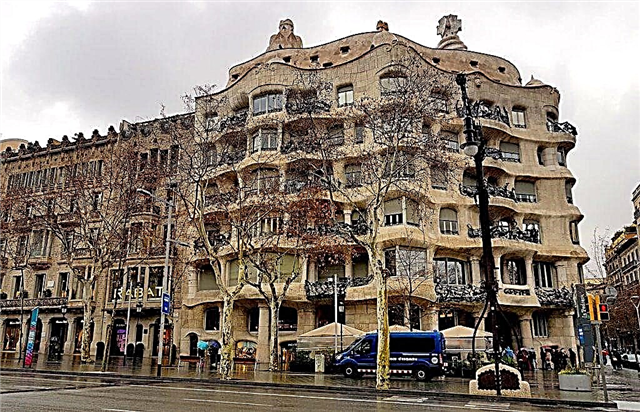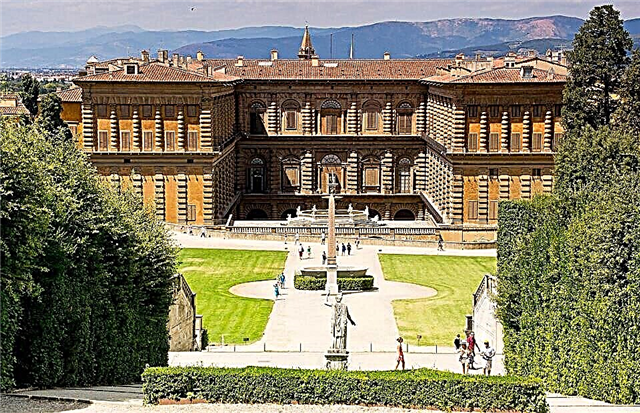Address: Germany, Berlin, Mitte district
Start of construction: 1788 year
Completion of construction: 1791 year
Architect: Karl Gottgard Langgans
Coordinates: 52 ° 30'58.5 "N 13 ° 22'39.8" E
Content:
Short description
Not so long ago, one of the main symbols of Berlin and all of Germany, the Brandenburg Gate, celebrated a significant date - 225 years (2016) from the day of their grand opening. It is worth noting that this architectural masterpiece is not just a decoration of Berlin, but also serves as a symbol of the country's unification.

View of the gate from Paris Square
The Brandenburg Gate is the only one that managed to survive during difficult times for Berlin... To see them, you should go to the border of the Tiergarten and Mitte districts, to Unter den Linden street. Near the gate is almost always crowded: they arouse the interest of tourists not only in the daytime, but also when dusk falls on the capital of Germany. The unique, state-of-the-art lighting makes the columns and the quadriga towering above them a truly fantastic sight.
Various events are often held near the Brandenburg Gate in Berlin, which are dedicated to the memory of soldiers who died in wars. In addition, concerts of popular groups and soloists are organized on the territory adjacent to the gate. One of such concerts, which went down in the history of Berlin and the Brandenburg Gate, can be safely considered the performance of the Scorpions, which was accompanied by a large symphony orchestra conducted by the well-known conductor and brilliant cellist Mstislav Rostropovich. The concert at the Brandenburg Gate, which attracted a huge number of spectators who came to see and hear the wonderful music, took place in November 1999. However, before this date, the Brandenburg Gate in Berlin had a difficult and, one might even say, difficult history.

Gate illuminated at night
Brandenburg Gate: construction
The first thing I would like to note, speaking of the Brandenburg Gate in Berlin, is that it originally had a different name - the Gate of Peace. Their construction took just over two years (1789 to 1791). The author of the project was the architect Karl Gottgard Lannhans, who is currently considered by experts to be the founder of a new direction in architecture called "Berlin Classicism". It cannot be said that the Brandenburg Gate is completely unique and inimitable, for example, the majestic columns made in the Doric style are almost identical to the propylaea of the legendary Acropolis, the ruins of which are located in the Greek capital Athens.
According to Lanngans's plan, before the grand opening, the gate was painted a dazzling white. Numerous historians put forward the opinion that the architect Johann Gottfried Schadov, who was engaged in decorating one of the main attractions of Berlin, advised the architect to paint the gate white. According to the surviving documents, an unambiguous conclusion can be drawn: the project of the goddess Victoria, who, as you know, symbolizes victory, on a chariot drawn by four horses, also belongs to Shadov. The quadriga, six meters high, is deployed to the east side of Berlin.

Gate view from the east
Brandenburg Gate: a difficult story
The aforementioned quadriga that crowns the Brandenburg Gate in Berlin was delightful not only among the inhabitants of the city, but also among the talented strategist and conqueror Napoleon Bonaparte. After French troops entered Berlin, Napoleon ordered the removal of the sculpture of Victoria and send it to France. The symbol of victory, especially such a beautiful one, could not, in the opinion of the emperor, be in the conquered city. As everyone knows from history, Napoleon's army was defeated, and its leader was exiled to a remote island, where he spent his last days. After defeating the invader, the quadriga with the goddess of victory Victoria was returned to Berlin and took its rightful place. True, after a long war, the goddess was slightly modified by the sculptor Friedrich Schinkel: she received the Iron Cross - a symbol of the order, which was awarded only to the most brave and loyal warriors of Germany.
Already in 1871, a march of soldiers who won the Franco-Prussian war and marked the proclamation of the German Empire, which, by the way, fell already in 1918, passed through the Brandenburg Gate. At the beginning of the twentieth century, soldiers marched through the Brandenburg Gate in triumph, thanks to which the empire became the German Republic.

Only fifteen years passed, and in 1933, the Brandenburg Gate was covered with huge banners with a swastika and witnessed the mystical march of the National Socialists. At that time, Adolf Hitler came to power in Germany, due to which numerous sights of Berlin, historical and architectural monuments, will suffer as a result of hostilities, and some will be irretrievably lost. In 1945, the Brandenburg Gate, located in the center of Berlin and the adjacent territory, became the scene of fierce battles. Exhausted by constant bombing and artillery shelling, the inhabitants of Berlin and the remnants of the armies of the Third Reich, staffed mostly by young men and women, fought with Soviet soldiers for their main symbols: the Reichstag and the Brandenburg Gate. It was no longer possible to restrain the onslaught of the Soviet army: Adolf Hitler took his own life in his bunker, and all the hatred of the Russians poured out on the sights of the city, from which the tyrant led the fascist army.
The Brandenburg Gate suffered serious damage in 1945: Doric columns were streaked with bullets and shrapnel. Under the symbol of Germany lay mountains of corpses, the grandeur of the Brandenburg Gate seemed to have sunk into oblivion.

View of the gate from the street on June 17
Nothing remained of the beautiful quadriga with the Iron Cross. One of the shells was precisely aimed at the symbol of victory. The place of the sculpture from 1945 to 1957 was taken by the huge red flag of the Soviet Union, which won a difficult victory in the fight against fascism. In 1957, the flag of the German Democratic Republic was hoisted on the Brandenburg Gate, which was in the zone of Soviet occupation. The government of the GDR in 1958, with the consent of the USSR, decided to restore the statue of Victoria. Since 1961, it was impossible to get to the Brandenburg Gate, which from the symbol of united Germany became the symbol of its division, was impossible to get. The thing is that the famous Berlin Wall separated one of the main attractions of Germany from the "western zone". However, citizens of the GDR were also prohibited from accessing the gate: an additional wall was erected on the eastern side, which completely isolated the Brandenburg Gate.
After the fall of the Berlin Wall, the Brandenburg Gate became the main symbol of the "new" united Germany. The joy of the Germans at that time is difficult to describe in words, many families were reunited, people could freely cross the territory of their country.

Chariot (Quadriga) ruled by the goddess of victory Victoria
The new year 1989 caused another damage to the quadriga. This time, the culprits were not the conquerors, but the inhabitants of Berlin itself, who, during the festivities, damaged the symbol of victory. Less than two years later, the Victoria statue has returned to its place for the umpteenth time. This is exactly how it can be seen by modern tourists who come to Berlin to enjoy its many attractions.
Guests of the city should remember that there are certain restrictions at the Brandenburg Gate, which must be adhered to, otherwise, a conflict with the numerous law enforcement officers guarding the symbol of a united Germany cannot be avoided. Many hotels in the German capital offer excursions around Berlin. The ideal solution is to join one of them. During the tour, you can take not only memorable photos against the backdrop of the Brandenburg Gate, but also hear from a professional guide a detailed history of the only gate in the capital of Germany.











